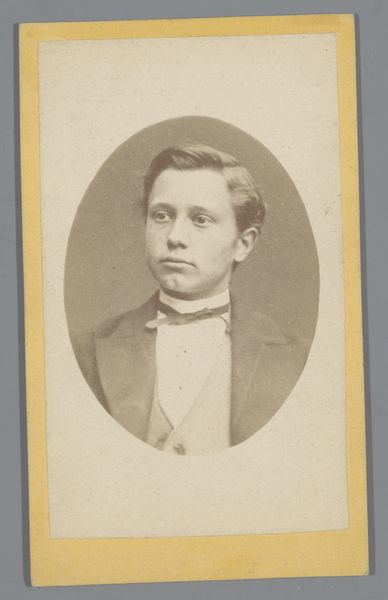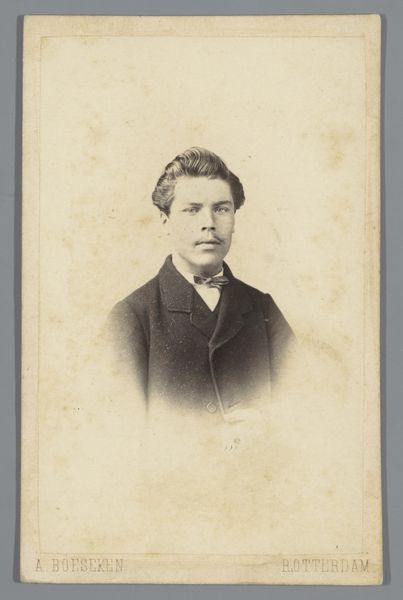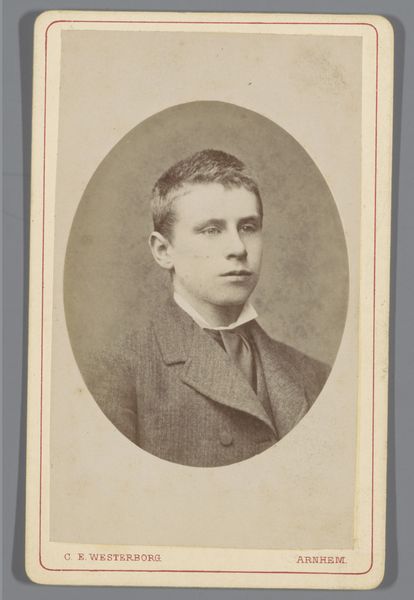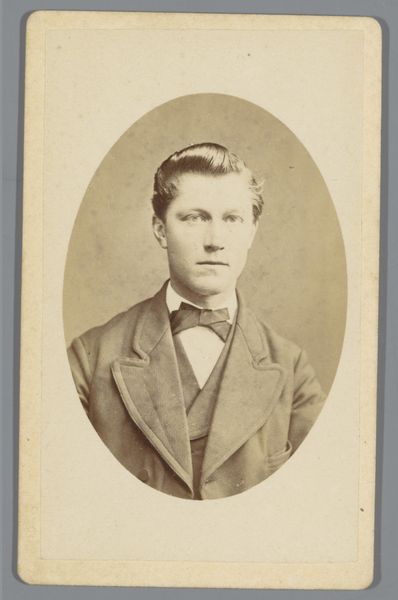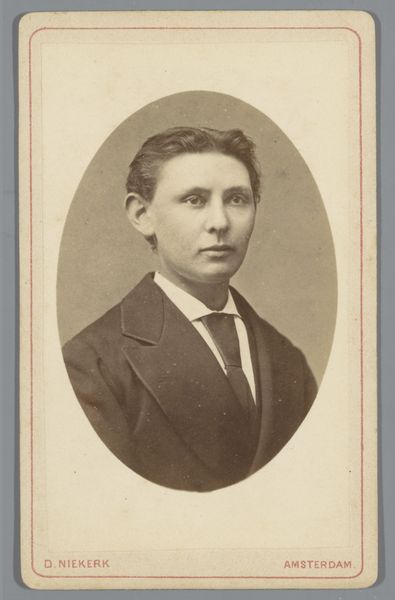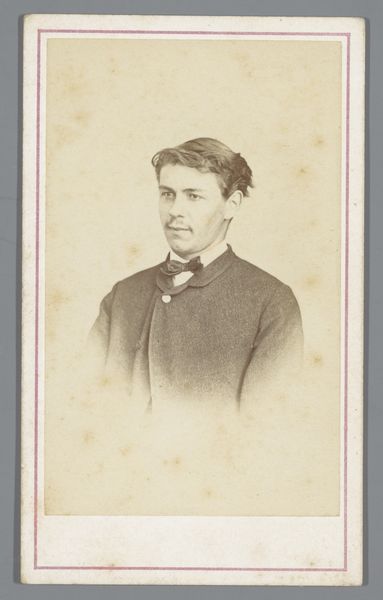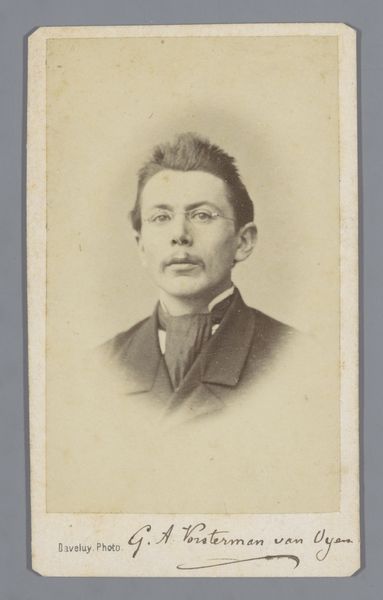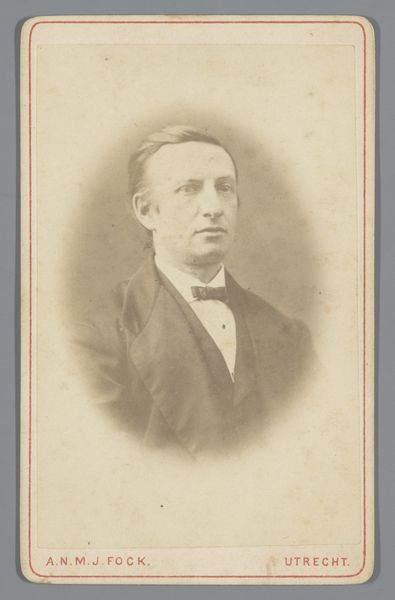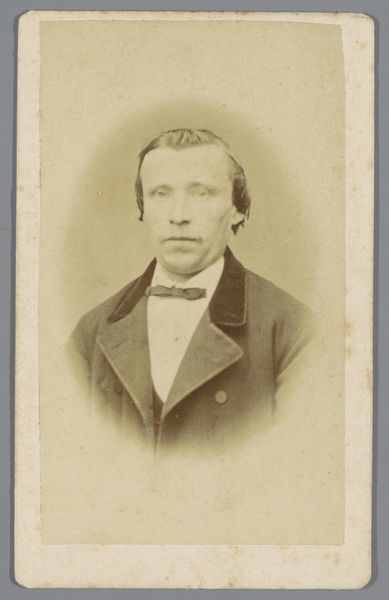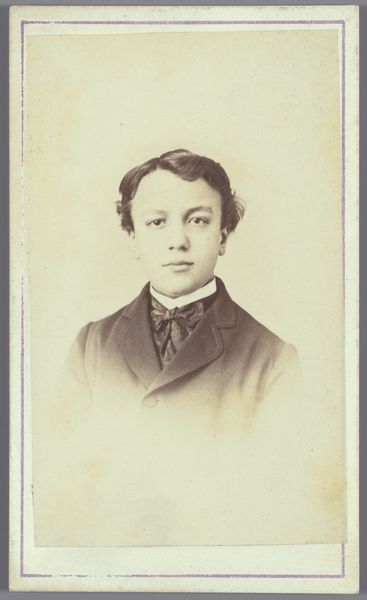
photography, gelatin-silver-print
#
portrait
#
16_19th-century
#
vintage
#
yellowing background
#
photography
#
historical fashion
#
gelatin-silver-print
#
19th century
#
realism
Dimensions: height 101 mm, width 62 mm
Copyright: Rijks Museum: Open Domain
Curator: Looking at this gelatin-silver print from between 1870 and 1891, titled "Portret van een onbekende man"—Portrait of an Unknown Man—I’m struck by how it encapsulates the photographic conventions of the late 19th century. Editor: There's a certain somberness to it, isn’t there? He almost seems defiant, like he’s challenging the viewer. The monochrome palette really amplifies that feeling. Curator: It does, and it reflects how photography at the time became increasingly accessible and standardized. Consider how such portraits functioned in society—as markers of status, lineage, or perhaps as keepsakes for loved ones separated by distance. It played a vital role in solidifying social identities. Editor: That’s fascinating. He seems aware of being looked at, but I wonder what being "unknown" meant for this image and others like it. It strips him of his specific identity, but also perhaps invites us to see him as representative of his time. Does the lack of attribution alter the value or meaning we can extract from it? Curator: Absolutely. The lack of a known subject opens up interpretive space, forcing us to grapple with broader questions. This work reflects a moment in time, both personally for the subject and professionally for Dirk le Grand. Its survival also hinges on the very institutions we represent. Museums collect, display, and ultimately determine the historical significance attributed to such works. The art world is just one more layer added on this piece. Editor: So the meaning we attach to him is built not just by his expression or attire but also by the social frameworks surrounding this photograph's existence and trajectory. As someone standing outside traditional art institutions, I wonder how the dominant narratives shape how we perceive even an image so seemingly simple as this one, an "unknown man." Who gets remembered, who is left behind, and who decides? Curator: It is those very frameworks, I believe, that allow us to question what survives into the public's view and becomes considered art. I believe that without the understanding of where the piece came from it changes the context we approach the artwork with. Editor: I agree completely. It serves as a reminder of whose stories are often marginalized. We need a multi-pronged approach when looking at these portraits as it might show new and previously obscured histories.
Comments
No comments
Be the first to comment and join the conversation on the ultimate creative platform.
